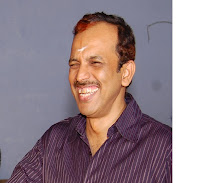SEEDS OF ICON WORSHIP IN SRIMAD BHAGAVAD GITA
This is in continuation of my previous post on 'Icon worship in Hinduism'.
I have always pondered whether or not Gita was the starting point of worship of forms! Such has been my thinking all along. And when I went into the Gita in such an angle, I found that Gita is indeed the fountainhead of icon worship in Bharat. Before the Mahabharata period ,we did not have temple worship.
Icon Vs Idol or Love Vs Fear
Before we begin, let us look closely. In Hinduism we have 'icons' (Vigrahas or Murthys) and never an 'idol'. Wherever you see the word 'icon' you may interchange it with Vigraha or Murthy.
It will be worthwhile to differentiate between an idol and an icon. A lay person in the ancient times , suddenly saw the full view of a big mountain from a clearing in a valley and was awed by it. Over a period of time his awe gave way to a kind of devotion and he started worshipping it. Similarly many people in
But imagine a learned person who knows by his intellect and perception about the reality and existence of God. This man, out of love for Him, personifies Him in many forms and images of his liking and creation. This is Icon worship. An icon is a superimposition whereas an idol is an object of existence to which man fearfully submits.
Icon worship created forms such as the elephant faced Ganapathy, the Linga, Kali etc. The same forms are worshipped for the attributes of God which are superimposed on them. Ganapathy symbolizes the Pranava, Linga denotes the philosophy of creation, Kali denotes the energy of cosmos, Vishnu symbolizes the Yoga Nidra where the Kundalini has arisen (sleeping on snake bed). Worship or Upasana or Pooja is never possible without a form of God and Love towards Him.
1. Then one sees in Chapter 2- 61 , where we see the words 'matpara:' (meaning- who takes refuge in me) for the first time.
tani sarvani samyamya yukta asita mat-parah |vase hi yasyendriyani tasya prajna pratisthita ||
( After keeping his sense under his full control, the striver should meditate and fix his heart and soul upon Me. One who has control on his senses has a stable wisdom.)
2. In Chapter 6, (Dhyana Yoga), sloka 14 , we see one of the most explicit commands of Sri Krishna to meditate on Him ! This meditation is one on His form only as many commentators pause at this sloka to give a detailed explanation and even list out the forms most suitable for meditation.
prashantatma vigata-bhir brahmacari-vrate sthitahmanah samyamya mac-citto yukta asita mat-parah
(Thus, with completely calm and subdued mind, without any fear, devoted in Me and firm in the state of sexual abstinence, the Yogi should mediate on Me as the Supreme Goal.)
3. In Chapter 4, slokas 6, 7, and 8 Sri
4. And in the 11 th chapter, sloka 54
bhaktya tv ananyaya sakya aham evam-vidho ’rjuna|
jnatum drastum ca tattvena pravestum ca parantap ||
(But O Subduer of enemies! Only by undivided devotion, one can understand, see and know the reality of this form of Mine. O Pandava! Those who engages in My work (surrendering all this actions to Me), is whole occupied by Me, devoted to Me, is without any attachment, and is free from malice, attains Me)
tad aham bhakty-upahrtam asnami prayatatmanah ||
(The thoughtful devotee who offers Me one leaf, flower, fruit, water with devotion, I accept the offerings of this effortful devotee.)
Someone may argue based on sloka 24 of chapter 7
param bhavam ajananto mamavyayam anuttamam ||
(Unintelligent men, who do not know My Supreme, inimitable and immortal form, assume My imperceptible form as manifested.)
that what


2 comments:
From the form to the formless
From the gross to the subtle
an ever increasing awareness
supported by Bhakti.
Worship is worship; its no matter if its form or formless for ultimately bhakti transforms into knowledge, which transcends all forms. One who truly has transcended will have a greater reverence to the form also as the formless.
The LkG teacher who taught us our alphabets is still important though one may have taken a PHD,
Good article. God is omnipotent. He claims to be a dasa of his baktha. If a baktha says that the god is in a stone (which you can call an icon or idol) God will come and take sannidhyam there. This was proved in the Narasimha avatar. The need of the hour is to develop belief in existence of God (in whatever form) and develop bakthi. LEAVE THE REST TO HIM.
Post a Comment